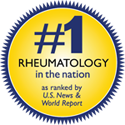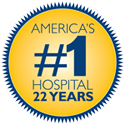Inclusion body myositis (IBM) is an inflammatory muscle disease characterized by progressive muscle weakness and wasting. Individuals with IBM usually develop symptoms after the age 50; however, some patients may present with symptoms as early as their 40’s. Patients typically develop difficulty in swallowing (dysphagia), weak fingers and wrists, atrophy of the forearms and thigh muscles.
Unlike other forms of myositis, IBM is approximately two times more common in men than in women.
Symptoms
- muscle weakness often progresses slowly over months or years
- weakness in the thighs, wrists and fingers
- difficulty swallowing (dysphagia)
- patients may have a history of frequent falls
Diagnostic Tests
There is not a single test that identifies IBM. The diagnosis is based on a combination of information and tests. Your doctor will ask for a complete medical history and will perform a thorough physical examination.
Certain blood tests, nerve conduction studies and electromyography, and muscle MRI studies may be ordered. A muscle biopsy is the most specific test for the diagnosis of IBM. The muscle biopsy is a minor surgical procedure. A local anesthetic is applied, and a small piece of muscle is removed – usually from a thigh muscle or the biceps muscle.
A muscle biopsy remains a critical diagnostic test to determine whether you have inclusion body myositis.
Treatment
Unfortunately, many patients with inclusion body myositis do not respond to medications that suppress the immune system. The mainstay of therapy is physical and occupational therapy and in individuals with swallowing difficulties, speech and language therapy.
Disease Education Video Series
Watch our 5 part series on Inclusion Body Myositis. We cover disease overview, Signs & Symptoms, Diagnosis, Treatment and Living with IBM.


